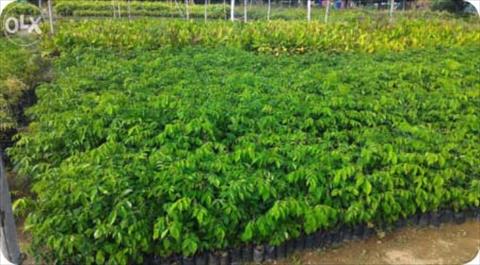Nutritionists at the Food and Agriculture Organisation of the United Nations (FAO) – Gambia office say a highly iron-rich bio-fortified cowpea crop variety that has been introduced in the country under the European Union (EU) funded food fortification project will help in the reduction of iron deficiency anaemia among Gambians.
The project titled: “Improving Food Security and Nutrition in The Gambia Through Food Fortification,” is currently conducting multiplication process of the Cowpea variety, obtained from Réseau des Organisations Paysannes et Pastorales (RECOPP) in Senegal alongside side pro-Vitamin A bio-fortified maize, cassava and Orange Flesh Sweet Potato (OFSP) in the communities in the rural Gambia.
The four-year project aims to improve the nutritional and health status of vulnerable populations suffering from micro-nutrient deficiencies, particularly women, girls and children in the North Bank and Central River regions, through increased consumption of micro-nutrient fortified foods.
It is being implemented by FAO in close partnership with the Ministry of Health (MoH), National Nutrition Agency (NaNA), Food Safety and Quality Authority (FSQA), The Gambia Standard Bureau, National Agricultural Research Institute (NARI) National Seeds Secretariat (NSS), the Department of Agriculture (DoA) and private sector institutions.
Nutrition officer at FAO and coordinator of the food fortification project, Solange Heise said they are looking at the adaptability and yield of the cowpea and other newly introduced crop varieties.
Speaking at a 50 by 50 multiplication farm in Basse last week, Heise said iron deficiency anaemia was on the rise among Gambians and regular consumption of the cowpea crop will help in the reduction of the rate. “It is important we eat food that is rich in high iron,” she said.
The project is expected to contribute to improvements in health and nutrition indicators, especially the reduction of stunting, wasting and normal cognitive development in children, reduce anaemia among women and complications during pregnancy and maternal mortality.
Malnutrition remains a major public health problem in The Gambia, adversely affecting vulnerable groups among the population, especially women of reproductive age and children under five years mainly due to inadequate intake of micro-nutrients from the daily diet.
According to the 2018 Multi-cluster Indicator Survey (MICS 2018), stunting levels are at 19%, underweight at 14% and wasting prevalence at 6% for children under five years.
National Agricultural Research Institute (NARI) focal person for bio-food fortification, Ousman M. Jarju said the role of the agricultural research institution is to observe the behaviour of the crop varieties and how they can be multiplied in the country. “The seeds will be distributed to farmers for multiplication.”
At Madina Lamin Kanteh Lower Basic School in Central River Region (CRR)-North, where a huge Orange Flesh Sweet Potato (OFSP) is being piloted at the school garden, Headmaster Pa Kemo Kinteh said they received three varieties of Somia, Tebele and Kandeh and they are thriving well.
Since 2018, NARI, through support from FAO has been providing bio-fortified maize seed, Orange-Fleshed Sweet Potato (OFSP) vines, cassava cuttings and Cow-pea to selected farmers and groups in the North Bank and Central and Upper River regions for multiplication. The initiative forms part of the food based approach to combat the unacceptably high prevalence rate of micro-nutrient deficiencies (hidden hunger) in The Gambia in all its forms.






